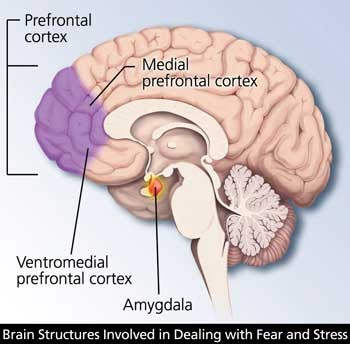The Female Brain's Reaction to Stress
Psychology professor Tracey Shores of Rutgers has discovered some interesting gender differences between the brains of male and female rats in their ability to learn immediately after being stressed.
The research, published Dec. 1 in the Journal of Neuroscience, has implications for the way stress-related disorders are treated in men and women.This study's findings are somewhat consistent with studies in humans from both USC in Los Angeles and researchers in Polish labs. Human males are more likely to analyse the dynamics of a stressful situation with the aim of taking definitive action to resolve the stressful stimulus. This male reaction requires the brain to assess a situation as clearly as possible, which may involve adapting known strategies to the situation or adopting entirely new strategies -- which requires learning.
Shors and her co-authors, graduate student Lisa Maeng and post-doctoral scholar Jaylyn Waddell, examined two brain regions important in learning and stress, the amygdala and the prefrontal cortex. The amygdala, a small almond-shaped structure located deep within the brain, senses stressful situations. The prefrontal cortex, in the front of the brain, is necessary for higher cognitive functions.
“These two structures are intimately connected to one another,” Shors said. “Therefore, we examined whether they communicate with one another to influence learning after stress.”
The researchers exposed male and female rats to stress, and then presented them with an associative learning task. During training, the rats learned to associate one event with another that occurred later in time. They played a tone and later stimulated the rats’ eyelids to elicit a blink. After the stimulus was taken away, most of the male rats responded to the tone by blinking on their own. Most of the females, however, did not blink in response to the tone, indicating that they had failed to learn that association. But the research also contained a neurological surprise for Shors, Maeng and Waddell.
When Shors and her colleagues disrupted the connections between the prefrontal cortex and the amygdala in some of the females, those females were able to learn the association.
“This wasn’t true for males," Shors said. "So, males and females are using different brain structures to learn after stress. In other words, females can learn after stress if the prefrontal cortex can’t ‘talk’ to the amygdala. From this, we conclude that males and females can use different brain circuits to learn after stressful life events.” _Rutgers
Human females in the face of stress, tend to look for assistance from sympathetic onlookers, bystanders, or companions. This response requires reading facial expressions of others in the vicinity, as well as their capacity to render assistance. Such abilities are rather instinctive in the female brain, and require minimal learning or creative adaptation.
As to the female rats inability to learn (basic stimulus response conditioning) immediately after stress, the extent of applicability of the finding to human females would require further study. All that can be said with respect to the USC and Polish studies, is that the stereotyped human female response to stress does not typically require new learning, not that she would be unable to learn if necessary (either stimulus-response conditioning or more conventional conscious learning).
No one is proposing cutting frontal cortex pathways in human females for such studies, but brain researchers may soon have tools to allow temporary, selective disruption of targeted pathways. At this time, transcranial magnetic stimulation can disrupt particular cortical areas -- since the cortex is closest to the skull, and easiest to reach with extra-cranial magnetic fields. As scientists find better ways to focus such pulsed fields deeper into the white matter of the brain, more selective targeting should be achievable.
Labels: BrainWorks, gender


0 Comments:
Post a Comment
“During times of universal deceit, telling the truth becomes a revolutionary act” _George Orwell
<< Home